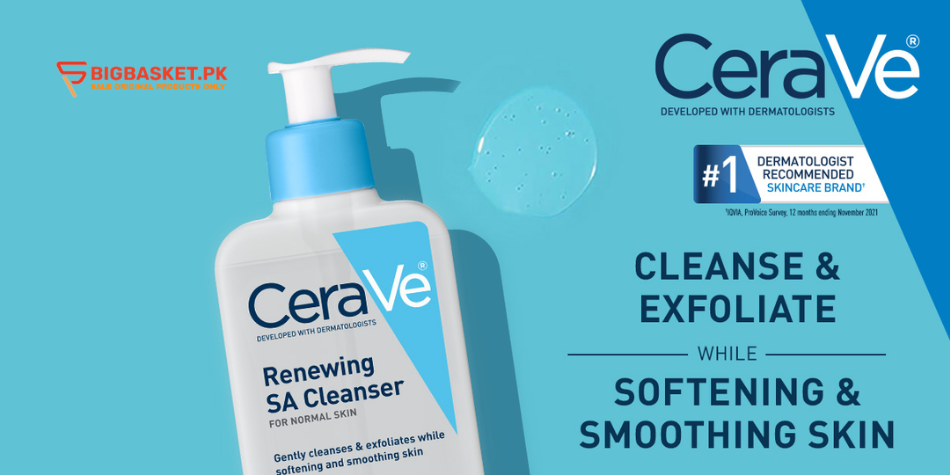The Science Behind AHA and BHA
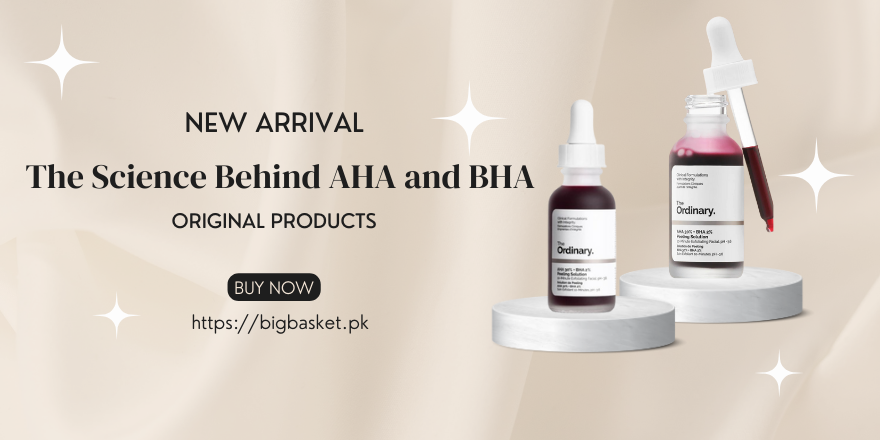
The Science Behind AHA and BHA The world of skincare is constantly evolving and introducing new ingredients and technologies to help us achieve our desired complexion. Two such ingredients that have gained immense popularity in recent years are Alpha Hydroxy Acids (AHA) and Beta Hydroxy Acids (BHA). These chemical exfoliants have been hailed for their ability to gently resurface and improve the skin’s texture, leaving it smoother, brighter, and more refined.
However, with all the buzz surrounding these acids, many may wonder what exactly makes them so effective. In this article, we will delve into the science behind AHA and BHA and explore how they work on the skin.
From their molecular structures to their impact on different skin types, we will uncover the mechanisms that make these acids a staple in the skincare routines of many. So, whether you’re a skincare fanatic or simply curious about the science behind these popular ingredients, read on to discover the secrets of AHA and BHA and how they can benefit your skin.
AHA and BHA: Understanding chemical exfoliants.
Chemical exfoliants are popular skincare ingredients that work wonders for improving the texture and appearance of the skin. Alpha hydroxy acids (AHAs) and beta hydroxy acids (BHAs) are two types of chemical exfoliants that are commonly used. AHAs, such as glycolic acid and lactic acid, work by loosening the bonds between dead skin cells, allowing them to be gently sloughed off, revealing fresh, glowing skin underneath.
On the other hand, The Science Behind AHA and BHA, like salicylic acid, are oil-soluble and can penetrate deep into the pores, effectively unclogging them and reducing the appearance of acne and blackheads. Both AHAs and BHAs can help to improve skin tone, smooth out rough texture, and promote a more youthful complexion. However, it’s important to note that these exfoliants can make the skin more sensitive to the sun, so it’s crucial to use sunscreen regularly and limit sun exposure when incorporating them into your skincare routine.
Chemical exfoliants: What are they?
Chemical exfoliants are a category of skincare products that are designed to remove dead skin cells and promote skin renewal. Unlike physical exfoliants, which rely on abrasive particles to slough off dead skin, chemical exfoliants work by utilizing specific ingredients that break down the bonds between skin cells.
The two main types of chemical exfoliants are alpha hydroxy acids (AHAs) and beta hydroxy acids (BHAs). AHAs, such as glycolic acid and lactic acid, are water-soluble and work on the skin’s surface to gently exfoliate and improve skin texture. BHAs, like salicylic acid, are oil-soluble and can penetrate deeper into the pores to unclog them and reduce acne and blackheads.
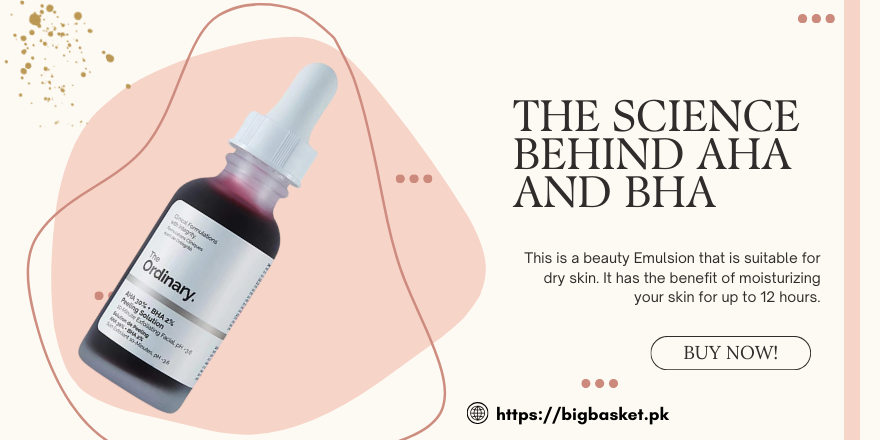
Chemical exfoliants offer a range of benefits, including improved skin tone, smoothness, and a more youthful complexion. However, it is important to follow proper usage guidelines and protect the skin from sun exposure as these exfoliants can increase sensitivity to the sun.
AHA vs BHA: Key differences explained.
When comparing The Science Behind AHA and BHA, it is important to understand the key differences between these two chemical exfoliants. One significant distinction lies in their solubility. AHAs are water-soluble, which means they primarily work on the skin’s surface. They gently remove dead skin cells and promote cell turnover, resulting in improved texture and a more radiant complexion.
On the other hand, BHAs are oil-soluble, allowing them to penetrate deeper into the pores. This makes BHAs particularly effective at unclogging pores, reducing acne breakouts, and minimizing blackheads. Additionally, AHAs are generally more suitable for those with dry or sensitive skin, while BHAs are often recommended for individuals with oily or acne-prone skin. Understanding these differences can help you choose the right chemical exfoliant for your specific skincare needs.
How AHA and BHA work.
Both AHA (alpha hydroxy acids) and BHA (beta hydroxy acids) are powerful exfoliants that work to improve the overall appearance and health of the skin. AHA works by gently loosening the bonds between dead skin cells on the surface of the skin, allowing for easier removal and revealing a fresh, healthier-looking complexion. It also stimulates cell turnover, promoting the growth of new skin cells.
BHA, on the other hand, has the unique ability to penetrate the pores and dissolve excess sebum and debris, effectively unclogging them and reducing the formation of acne. Its anti-inflammatory properties also help to calm existing breakouts and soothe irritated skin. Both AHA and BHA can be beneficial in targeting specific skin concerns such as fine lines, wrinkles, hyperpigmentation, and uneven texture, but it’s important to choose the right type of acid and concentration based on your skin type and concerns to ensure optimal results.
AHAs and BHAs: Skin-savvy acids explained
AHAs and BHAs are two types of acids commonly used in skincare products for their exfoliating and clarifying properties. AHAs, or alpha hydroxy acids, are derived from fruits and milk sugars and are known for their ability to gently remove dead skin cells and improve skin texture. They are effective in reducing the appearance of fine lines, wrinkles, and hyperpigmentation.
BHAs, or beta hydroxy acids, on the other hand, are oil-soluble acids that can penetrate deep into the pores, making them particularly beneficial for treating acne-prone or oily skin. They work by exfoliating the skin and removing excess oil and debris, helping to reduce the occurrence of breakouts. Both AHAs and BHAs can offer significant benefits to the skin, and the choice between them depends on individual skin concerns and preferences.
It is important to note that as with any skincare ingredient, it is recommended to start with lower concentrations and gradually increase usage to prevent skin irritation. Additionally, it is crucial to protect the skin with sunscreen when using AHAs or BHAs, as they can increase sensitivity to the sun.
Understanding chemical exfoliation and skincare
Chemical exfoliation is a skincare technique that involves the use of acids to gently remove dead skin cells, unclog pores, and improve skin texture. It is an effective method for achieving smoother, brighter, and healthier-looking skin. Understanding the different types of acids used in chemical exfoliation is essential in selecting the right products for your skincare routine.
AHAs, or alpha hydroxy acids, are derived from natural sources like fruits and milk sugars. They work by loosening the bonds between dead skin cells, allowing them to be easily sloughed off. BHAs, or beta hydroxy acids, on the other hand, are oil-soluble and can penetrate deep into the pores, making them particularly beneficial for reducing acne and controlling excess oil production. Incorporating chemical exfoliation into your skincare regimen can help address a range of concerns, such as uneven skin tone, fine lines, and acne.
However, it is important to start with lower concentrations and gradually increase usage to prevent skin irritation or sensitivity. Additionally, it is advisable to consult with a skincare professional to determine the most suitable products and routine for your specific skin type and concerns. By understanding the benefits and differences of chemical exfoliation, you can make informed decisions to enhance your skincare routine and achieve radiant, youthful-looking skin.
AHAs: Effective for surface exfoliation
AHAs, or alpha hydroxy acids, are highly effective for surface exfoliation. These acids work by breaking down the intercellular glue that holds dead skin cells together, allowing them to be easily sloughed off. This process reveals fresh, new skin underneath, resulting in a smoother and more radiant complexion.
AHAs are particularly beneficial for addressing concerns such as dullness, uneven skin texture, and fine lines. They can also help to lighten hyperpigmentation and improve the overall appearance of the skin. Popular AHAs include glycolic acid, lactic acid, and mandelic acid, each with their unique properties and benefits.
When incorporating AHAs into your skincare routine, it is important to start with lower concentrations and gradually work your way up to higher strengths to avoid potential irritation or sensitivity. Regular use of AHAs can help to maintain a youthful and healthy-looking complexion.
BHAs: Deeper penetration for acne-prone skin
For those with acne-prone skin, The Science Behind AHA and BHA, or beta hydroxy acids, offer a deeper level of penetration to address specific concerns. BHAs, such as salicylic acid, can penetrate through oil and into the pores, effectively unclogging them and reducing the formation of acne.
This process helps to remove excess oil, dirt, and bacteria, which are often the underlying causes of breakouts. Additionally, BHAs possess anti-inflammatory properties, which can help to calm redness and irritation associated with acne.
By exfoliating and clarifying the skin, BHAs can help to minimize the appearance of blemishes and promote a clearer complexion. It is important to note that BHAs may be more suitable for oily, acne-prone skin types and should be used in conjunction with other skincare products to maintain a balanced and effective routine.
Choose the right acid for you.
When it comes to choosing the right acid for your skincare routine, it’s important to consider your specific skin type and concerns. AHAs, or alpha hydroxy acids, are known for their ability to exfoliate the surface of the skin, promoting a smoother and more even complexion. These acids, such as glycolic or lactic acid, work by breaking down the bonds between dead skin cells, allowing them to be gently sloughed away.
This can help to improve the appearance of fine lines, wrinkles, and hyperpigmentation. AHAs are generally well-suited for those with dry or sun-damaged skin, as they provide hydration and a rejuvenating effect. However, it’s crucial to introduce AHAs slowly into your routine to avoid potential irritation or sensitivity. Remember, consulting with a dermatologist or skincare professional can help you determine the best acid for your individual needs.
Understanding BHA and Its Benefits
BHA, also known as beta hydroxy acid, is a powerful skincare ingredient that has gained popularity for its ability to penetrate deep into the pores and provide effective cleansing. Unlike other exfoliating agents, The Science Behind AHA and BHA is oil-soluble, making it particularly effective for those with oily or acne-prone skin.
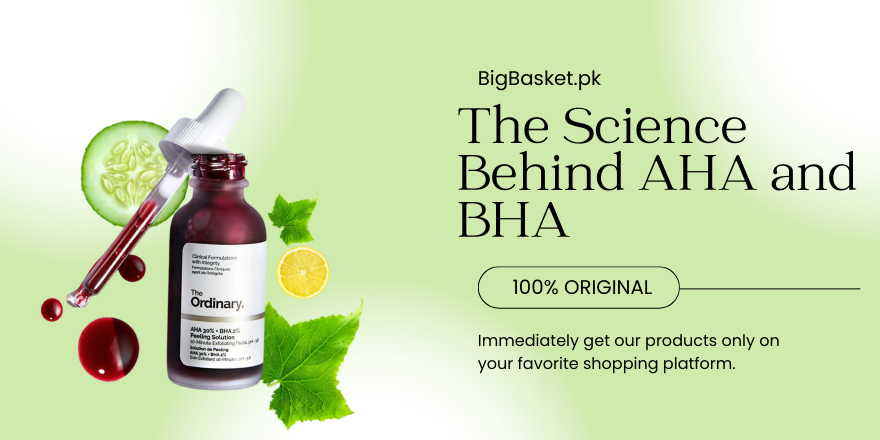
By dissolving the buildup of excess sebum, dead skin cells, and impurities within the pores, BHA helps to prevent clogged pores and reduce the occurrence of acne breakouts. Additionally, BHA has anti-inflammatory properties, making it beneficial for reducing redness and calming irritated skin. Regular use of products containing BHA can result in smoother, clearer, and more radiant skin overall.
Effective Exfoliation for Clear Skin
Exfoliation is an essential step in any skincare routine to achieve and maintain clear, healthy-looking skin. By removing dead skin cells from the surface, exfoliation helps to unclog pores, prevent acne breakouts, and improve the overall texture and tone of the skin. To ensure effective exfoliation, it is important to choose the right exfoliating agent for your skin type and concerns.
One such effective option is beta hydroxy acid (BHA). BHA has the unique ability to penetrate deep into the pores, thanks to its oil-soluble nature. This allows it to effectively dissolve excess sebum, dead skin cells, and impurities that can cause clogged pores and blemishes. Incorporating BHA into your skincare routine can help to reveal smoother, clearer, and more radiant skin, making it a valuable tool in achieving your skincare goals.
How BHA Clears Out Pores
BHA, or beta hydroxy acid, serves as a powerful tool in clearing out pores and promoting healthier skin. As an exfoliating agent, BHA works by penetrating deep into the pores, breaking down and dissolving the build-up of excess sebum, dead skin cells, and other impurities that contribute to clogged pores. Its oil-soluble nature allows it to effectively target the root causes of pore congestion, resulting in a more thorough and efficient cleansing process.
By eliminating these obstructions, The Science Behind AHA and BHA helps to prevent the formation of acne breakouts and promotes the overall clarity and smoothness of the skin. Regular use of BHA as part of a comprehensive skincare routine can lead to visibly improved pores and a revitalized complexion.
Targeting Stubborn Blackheads and Acne
When it comes to targeting stubborn blackheads and acne, incorporating The Science Behind AHA and BHA into your skincare routine can be highly beneficial. BHA’s ability to penetrate deep into the pores allows it to effectively address the underlying causes of these skin concerns.
By dissolving the buildup of excess sebum, dead skin cells, and other impurities that contribute to clogged pores, BHA helps to prevent the formation of blackheads and breakouts. Its exfoliating properties also promote cellular turnover, revealing fresher, healthier skin. With regular use, BHA can significantly improve the appearance of blackheads and acne, leading to a clearer and more refined complexion.
Incorporating BHA into Your Skincare Routine
Incorporating BHA into your skincare routine can be a game-changer in achieving a smoother and more radiant complexion. BHA, or beta hydroxy acid, is known for its ability to deeply penetrate the pores, targeting and eliminating pore-clogging impurities. By gently exfoliating the skin’s surface, BHA helps to remove dead skin cells and excess sebum, effectively preventing the formation of blackheads and reducing the occurrence of breakouts.
Additionally, BHA’s anti-inflammatory properties can help calm redness and irritation, promoting a more balanced and even-toned complexion. To incorporate BHA into your routine, look for skincare products such as toners, serums, or exfoliants that contain a suitable concentration of this powerful ingredient. Regular use of BHA can lead to visibly clearer and healthier-looking skin, making it a valuable addition to any skincare regimen.
AHA and BHA: Anti-aging powerhouses
When it comes to combating signs of aging, AHA (alpha hydroxy acids) and BHA (beta hydroxy acids) have emerged as powerful ingredients in skincare. These chemical exfoliants offer a range of benefits, including the reduction of fine lines and wrinkles.
AHA, such as glycolic and lactic acid, gently exfoliates the skin’s surface, promoting cell turnover and revealing a smoother, more radiant complexion. On the other hand, BHA, commonly known as salicylic acid, penetrates deeper into the pores, effectively unclogging them and reducing the appearance of acne and blackheads. By incorporating AHA and BHA into your skincare routine, you can harness their anti-aging prowess and enjoy a more youthful and rejuvenated complexion.
Exfoliation for smoother, youthful skin
Regular exfoliation is a proven method for achieving smoother and more youthful-looking skin. By removing dead skin cells from the surface, exfoliation helps to improve skin texture, promote cell turnover, and stimulate collagen production. This process not only reveals a brighter complexion but also diminishes the appearance of fine lines and wrinkles over time.
Exfoliation can be done through physical scrubs, chemical exfoliants like The Science Behind AHA and BHA, or even with tools like brushes or facial cleansing devices. However, it’s important to strike a balance and not overdo it, as excessive exfoliation can lead to irritation and damage the skin’s natural barrier. Incorporating exfoliation into your skincare routine, tailored to your skin type and concerns, can effectively enhance the overall health and appearance of your skin.
Diminish fine lines and wrinkles
To effectively diminish fine lines and wrinkles, it is crucial to understand the impact of ingredients such as AHA (alpha hydroxy acid) and BHA (beta hydroxy acid) on the skin. These chemical exfoliants have been widely recognized for their ability to improve the texture and appearance of the skin.
AHA, commonly derived from sources like glycolic or lactic acid, works by gently loosening the bonds between dead skin cells, encouraging their shedding and promoting skin cell turnover. The Science Behind AHA and BHA, on the other hand, such as salicylic acid, is known for its ability to penetrate deep into the pores, effectively unclogging them and reducing the appearance of fine lines and wrinkles.
By incorporating products containing AHA or BHA into your skincare routine, you can help to stimulate collagen production, improve skin elasticity, and ultimately achieve a smoother and more youthful complexion.
Enhance collagen production naturally
There are also natural ways to enhance collagen production, which can further contribute to reducing fine lines and wrinkles. Consuming collagen-rich foods such as bone broth, fish, lean meats, and leafy greens can provide the necessary building blocks for collagen synthesis in the body. A
dditionally, incorporating vitamin C-rich foods like citrus fruits, berries, and bell peppers can support collagen production by acting as a cofactor in the formation of collagen fibers. Another natural method to stimulate collagen production is through facial massage and exercises. T
hese techniques increase blood flow to the skin, promoting the delivery of nutrients and oxygen to the cells responsible for collagen production. By combining the benefits of AHA and BHA with these natural approaches, individuals can optimize their efforts to enhance collagen production, resulting in a more youthful and rejuvenated complexion.
A powerful duo for anti-aging.
In the quest for youthful and radiant skin, the combination of alpha hydroxy acids (AHAs) and beta hydroxy acids (BHAs) has emerged as a powerful duo in the fight against aging. AHAs, such as glycolic and lactic acid, work by exfoliating the top layer of the skin, promoting cell turnover, and reducing the appearance of fine lines and wrinkles.
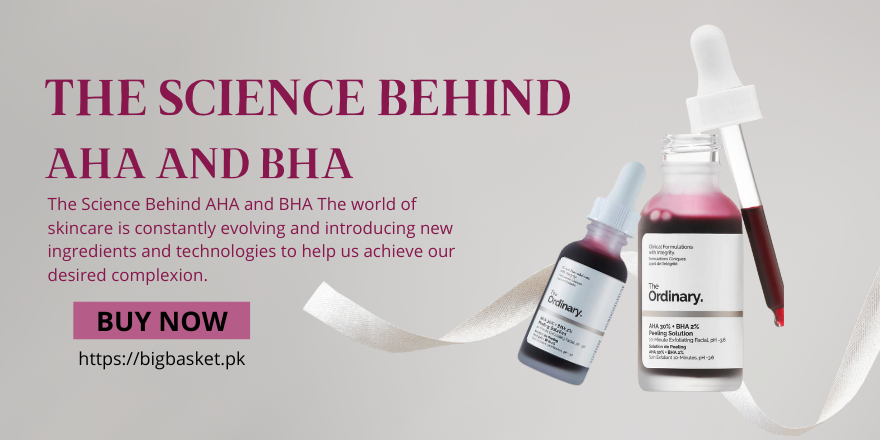
On the other hand, The Science Behind AHA and BHA, such as salicylic acid, penetrate deep into the pores, effectively unclogging them and reducing inflammation, resulting in smoother and clearer skin. Together, these two ingredients work synergistically to address multiple skin concerns, including uneven texture, hyperpigmentation, and enlarged pores.
Incorporating skincare products containing AHA and BHA into a regular skincare routine can significantly improve the overall appearance and texture of the skin, leaving it looking youthful and revitalized.
Conclusion
In conclusion, the use of The Science Behind AHA and BHA in skincare products has been proven to effectively reduce the appearance of fine lines and wrinkles. These chemical exfoliants work by gently removing dead skin cells and promoting cell turnover, resulting in smoother and more youthful-looking skin. When incorporated into a consistent skincare routine, AHA and BHA can have a significant impact on reducing the signs of aging.
However, it is important to consult with a dermatologist before adding these ingredients to your routine, as they may not be suitable for all skin types. Overall, the potential benefits of AHA and BHA make them a valuable addition to any anti-aging skincare regimen.
FAQ’s
What makes AHA and BHA different in terms of their chemical composition and action on the skin?
Chemical Composition: AHAs are water-soluble acids derived from fruits and milk, while BHAs, such as salicylic acid, are oil-soluble.
Skin Penetration: AHAs primarily work on the skin surface, exfoliating dead cells, while BHAs can penetrate deeper into pores, making them effective for unclogging and treating acne.
How do AHAs and BHAs work on the skin?
AHA Mechanism: AHAs exfoliate the skin’s surface by breaking down the bonds between dead skin cells, promoting cell turnover and revealing fresher skin.
BHA Mechanism: BHAs penetrate the skin’s surface and can enter pores, dissolving sebum and debris, making them effective for clearing pores and treating acne.
What benefits do AHAs and BHAs provide at a cellular level?
AHAs: They stimulate collagen production, which contributes to improved skin texture and firmness.
BHAs: Effective in reducing inflammation and bacteria in pores, BHAs help prevent breakouts and maintain clear skin.
How do AHAs and BHAs affect different skin concerns such as acne, fine lines, and pigmentation?
Acne Treatment: The Science Behind AHA and BHA, due to their pore-penetrating ability, are particularly effective against acne by unclogging pores and reducing inflammation. AHAs contribute to a smoother skin texture and can indirectly help with acne scarring.
Fine Lines and Wrinkles: AHAs aid in reducing the appearance of fine lines and wrinkles by encouraging cell turnover and collagen production.
Pigmentation: AHAs are effective in reducing pigmentation and promoting a more even skin tone.
Are there any considerations or precautions when using AHAs and BHAs?
Skin Sensitivity: Initial use might cause mild irritation, which typically subsides as the skin adjusts. Starting with lower concentrations is advisable.
Sun Sensitivity: Both AHAs and BHAs can increase sun sensitivity, making sunscreen application crucial during daytime use.
How long does it take to see noticeable results from AHA and BHA usage?
Short-Term: Immediate effects include smoother skin texture and a refreshed appearance.
Long-Term: Significant changes, such as reduction in fine lines or improvement in acne, may take several weeks of consistent use
No products found







